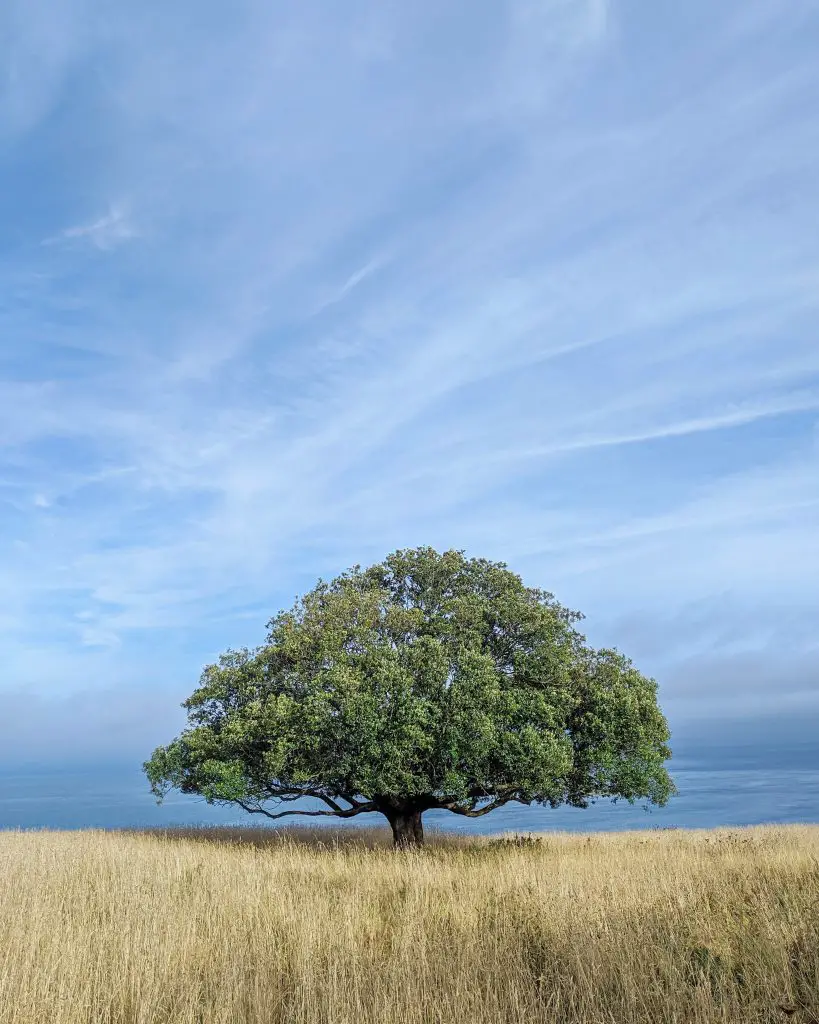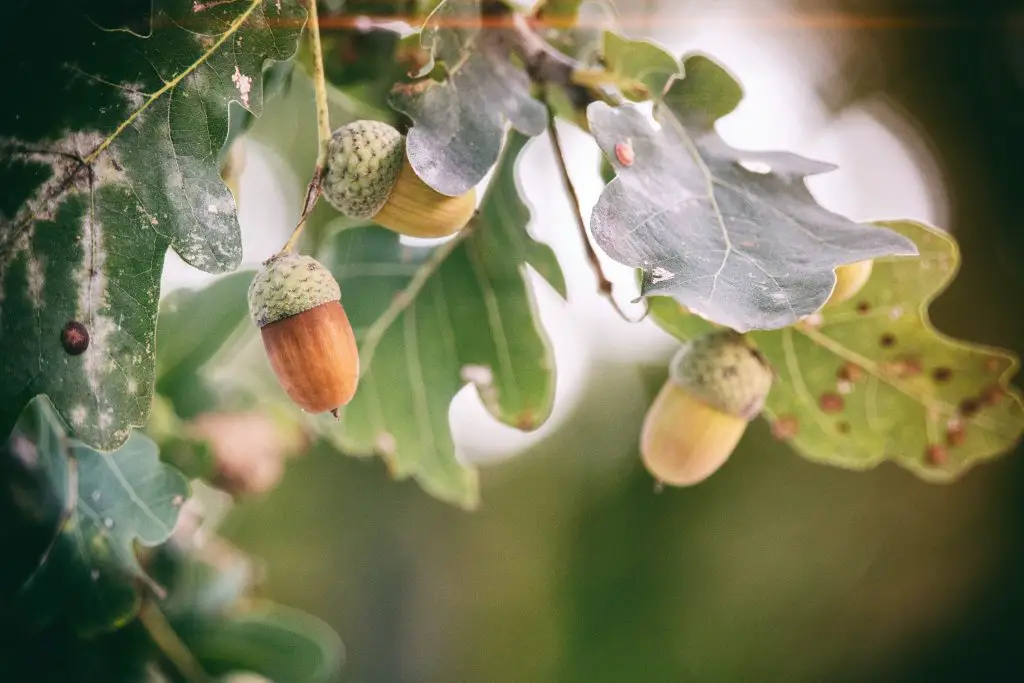How Long Do Oak Trees Live? A lot of people are curious about how long oak trees live. You can find these trees all around the world, in both temperate and tropical climates. Part of the mystery around these beautiful trees is how long they live.
Most species of oak trees live for over 200 years, however, this is dependant upon the specific species. There are cases of oak trees surviving close to 1000 years one notable example of this was a tree planted during the reign of King John that survived over 800 years. The lifespan can also be directly related to the size of the tree. Larger trees mean the tree has aged slower. Trees not between 150-300 years old are not considered to be old.
About Oak Trees
The oak belongs to the genus Quercus which is a group of trees with a diverse range of species. These trees are most commonly deciduous, though there are in a few evergreen species.

There are over 600 different species of trees however 78 species of oaks are listed as endangered due to overexploitation, habitat destructions, diseases, and introduction of invasive species.
Oak trees are often tall and large in size. They can reach 70 feet in height with trunks reaching 9 feet in width. Their branches can extend to 135 ft in length. Due to this size oak trees demand a large amount of water each day and are capable of absorbing more than 50 gallons of water daily.
Oak trees only start to produce fruit (aka acorns) once the tree has reached 20 to 50 years old. They can produce 2000 acorns each year, however, only a small number of these acorns will ever produce another tree. It is estimated that only 1 in 10000 acorns will successfully germinate.
A wide variety of animals feed on acorns including pigs and deer. However, despite their popularity with some animals the acorns of young oak trees, and their stems and leaves are known to contain tannic acid which induces toxic effects on cattle. It can cause stomach ulcers, kidney damage, and birth defects among newly born cattle.
Due to its strength, hardness, and durability oak has a variety of uses including the construction of ships and furniture. Oak is also used for the manufacture of barrels that are then used to store various liquors. These oaks add a unique flavor to the vine, whiskey, brandy, and other liquors.
What Are Signs that Your Oak Tree May Be Dying?
While the oak trees live for a long time they will not last forever and can succumb to old age or unfavorable growing conditions. Given their size and weight it is important that you are constantly on the look out for signs of any problems. The most common signs are;
- Yellow Leaves
- Foliage Loss
- Decaying Bark
- Powdery Mildew
- Rotted Roots
Yellow Leaves
Have you noticed yellow leaves with greenish-colored veins on your oak tree? This could be one of two things “english oak disease” or generally malnutition.
English oak disease is caused by a soil fungus called Phytophthora ramorum, which is native to the wet soil and is spread by rain splash into the tree. Without treatment, the disease can spread to other trees and plants in the vicinity, so the entire grove has to be destroyed.
Complete Treatment is important for the survival of your trees. All cured oaks should have been pruned several inches above the soil or soil black fabric barrier.
This disease spreads by splashing water, so as to prevent the disease, the tree should be well protected by high non-splashable fence, so do not directly water the oak tree for two or three days when raining.
The discoloration of leaves could also be a sign of malnutrition. Oak trees need nutrients to thrive, and when they don’t get enough of these nutrients, it may lead to yellow leaves with greenish veins. If this remains untreated it may threaten the survival of the tree. To rule this out have your soil tested to confirm that the nutrients are adequate of the tree’s requirements.

Foliage Loss
It is not common for oak trees to lose foliage, but when the cool fall weather arrives, it could be a sign of Diplodia canker, which is a disease that attacks oak trees by attacking the twigs and branches.
The infected areas eventually grow and coalesce killing portions of the tree. This is a serious issue because of the decline in American and European oaks, over half of the oak population decline in the US has been associated with this disease. This is a disease that has negative impacts on oak trees, wildlife and the aesthetics of our environment.
To treat Diplodia canker in oak trees both insecticides and fungicides can be applied as injections from the bottom of the tree to directly access the xylem.
Xylem is a type of hard tissue in vascular plants that is used to transport water and mineral nutrients, such as salts, sugars, and proteins, to and from the roots and in this case is useful in distributing the treatment around the tree.
For this treatment to be successful they to be applied before the tree weakens and dies. as this is the key to prolonging the life.
Decaying Bark
If the oak tree is dying one of the first noticeable signs is you’ll start to see some rotting around the bark. Decaying bark in an oak tree means that the oak tree is sick. There are several possible reasons for this. Most commonly it is a result of fungi. This is usually less serious than other organisms attacking the tree.
A more serious possibility is that the tree is under attack by insects. An infestation of gypsy moths, for example, can strip an oak tree of its leaves. These types of insect are more destructive than fungus and the tree fails to recover given the right conditions.
Identifying gypsy moth is pretty easy to identify as they are mostly grey, brown and rosette in appearance. To get rid of Gypsy moth an insectide containing organophosphates will kill them because the chemicals disrupt their ability to control the muscles in their body and eventually the insects die.
Another possibility is that the tree is diseased. Although oak disease is somewhat rare, it can happen. Oak wilt is one such disease that can kill an oak tree if left unattended.
Powdery Mildew
Powdery is another common disease that affect many plants such as pumpkins, zucchini and also oak trees. The disease is caused by fungus that often appears in late spring. Its symptoms include a white discolouration on the surface of the leaves that is caused by a white powder. However, in severe cases it can strip off bark and kill the tree.
To treat powdery mildew I recommend using the Orbit Spray System. This is a concentrated package which cleans and coats your oaks with a lasting shield in just one application.
The shield is made up of a blend of anti-bacterial, anti fungal and repellence products which helps out in providing long lasting cure by eliminating the root cause of mildew. It is recommended to use this product in Spring season each year and also during wider outbreak of mildew.

Rotted Roots
Root-rot generally occur as a result of a fungus and water molds and is generally referred to as root-rot in general. This is more problematic in high temperature and humidity are high, such as California. Conditions are particularly favorable for mold around San Francisco. You usually want to be cautious of over watering, being sure not to over water your oaks.
The fungi that effect the trees live in the soil underneath them, and they siphon off nutrients from the trees’ roots. When the trees’ roots are decimated by the fungi, they will die.
The only treatment is to improve the health of the tree generally. You can try and put new soil and compost around the oak tree’s base in the hope that this will stimulate new root growth, help reduce soil compaction, and feed the tree.
You also need to get rid of the dead roots. Kill the fungi in the root with a drench of potassium bicarbonate. The best time to do this is when the tree goes dormant in the winter.
Relevant Articles
What Is A Chinese Maple? How Does It Differ From Other Maple Trees?
What Is The Difference Between A Cherry Blossom And A Cherry Tree?
7 Easy Steps To Creating An Orchard In Your Own Yard
